Cisco Router Login
It can be difficult to navigate the world of networking, but the cornerstone of managing a robust and secure network begins with a simple, yet crucial step: the Cisco router login. This initial gateway into your router’s administration interface is more than just a formality; it’s the first line of defense against unauthorized access and a pivotal point in configuring your network to meet both performance and security standards.
Understanding how to efficiently log into your Cisco router not only ensures that you’re able to maintain control over your network’s configurations but also empowers you to optimize its performance, implement robust security measures, and troubleshoot any potential issues that may arise. Whether you’re setting up a new network or managing an existing one, the ability to access your Cisco router with ease is essential for network administrators, IT specialists, and home users alike.
In this guide, we will delve into the nuances of Cisco router login, covering everything from the basics of accessing your router to advanced configuration techniques. Our goal is to provide providing you with the information and resources required to safely navigate the login process, setting the stage for a secure, efficient, and well-managed network. Stay with us as we explore the critical steps and strategies for successful Cisco router login and subsequent setup, ensuring you can leverage the full capabilities of your networking equipment.
Getting Started Your Cisco Router
Embarking on the journey of setting up your Cisco router begins the moment you unbox your device. This first phase is essential for creating the foundation of a secure and efficient network. Let’s navigate through the essential steps to get your Cisco router up and running, ensuring a smooth admin cisco router login and a seamless setup process.
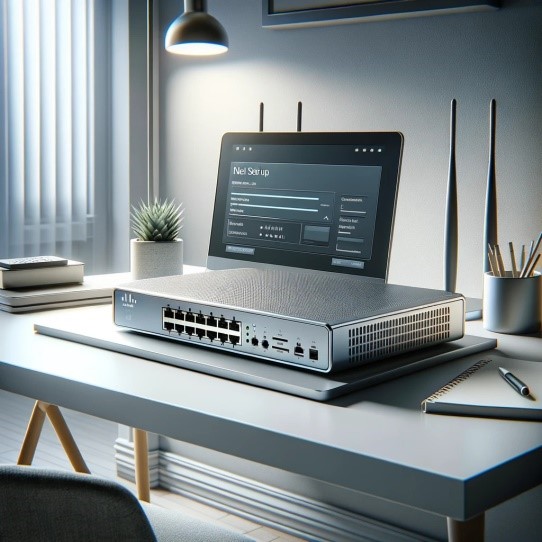
-
Unboxing and Inspection:
Upon unboxing your Cisco router, carefully inspect the device and its accessories for any signs of damage. Inside the box, You should discover the router itself, an Ethernet cable, a power adapter, and possibly a quick-start guide. It’s important to ensure that all expected components are present and in good condition before proceeding.
-
Connecting Your Router:
The physical setup of your Cisco router involves connecting it to power and your modem. First, plug the power adapter into your router and a power outlet, turning the device on. Next, using the Ethernet cable, connect your router’s WAN or Internet port to your modem. This connection is vital for your router to access the internet and distribute it to your network.
-
Initial Power-Up and LED Check:
Once connected to power and your modem, your Cisco router will begin its initial startup. This process may take a few minutes. During this time, observe the LED indicators on the device. These lights provide valuable feedback about the status of your router, including power, internet connectivity, and LAN connections. A stable or blinking light typically indicates that the router is functioning correctly and progressing through its startup routine.
-
Preparing for Admin Login:
Before you can perform an admin cisco router login, you’ll need a computer or a mobile device. Connect this device to your router either via an Ethernet cable directly to one of the router’s LAN ports or through the default wireless network, if available. This connection is necessary for accessing the router’s web-based setup page, where you’ll perform the initial configuration.
-
Accessing the Cisco Router Default Login Page:
To access your router’s admin interface, you’ll need to open a web browser on your connected device and enter the router’s default IP address, typically found in the quick-start guide or on the bottom of the router. Common Cisco default IP addresses include 192.168.1.1 or 192.168.0.1. Upon navigating to this address, you’ll be prompted to enter the cisco router default login credentials, also usually provided in the router’s documentation.
By following these initial setup steps, you are now ready to log into your Cisco router’s admin interface. Remember, the admin cisco router login is your gateway to configuring your network’s settings, updating firmware, and securing your connection. In the next sections, we’ll explore how to log in using the default credentials and how to configure your router for optimal performance and security.
Default Login Credentials for Cisco Routers
Navigating through the initial setup of your Cisco router pivots around one critical step utilizing the cisco default login credentials. These factory-set usernames and passwords are your keys to accessing the administrative interface of your router, where the journey of customizing and securing your network truly begins. In this section, we’ll provide a comprehensive guide to the cisco router default username and password for various models, ensuring you can confidently access your router’s setup page.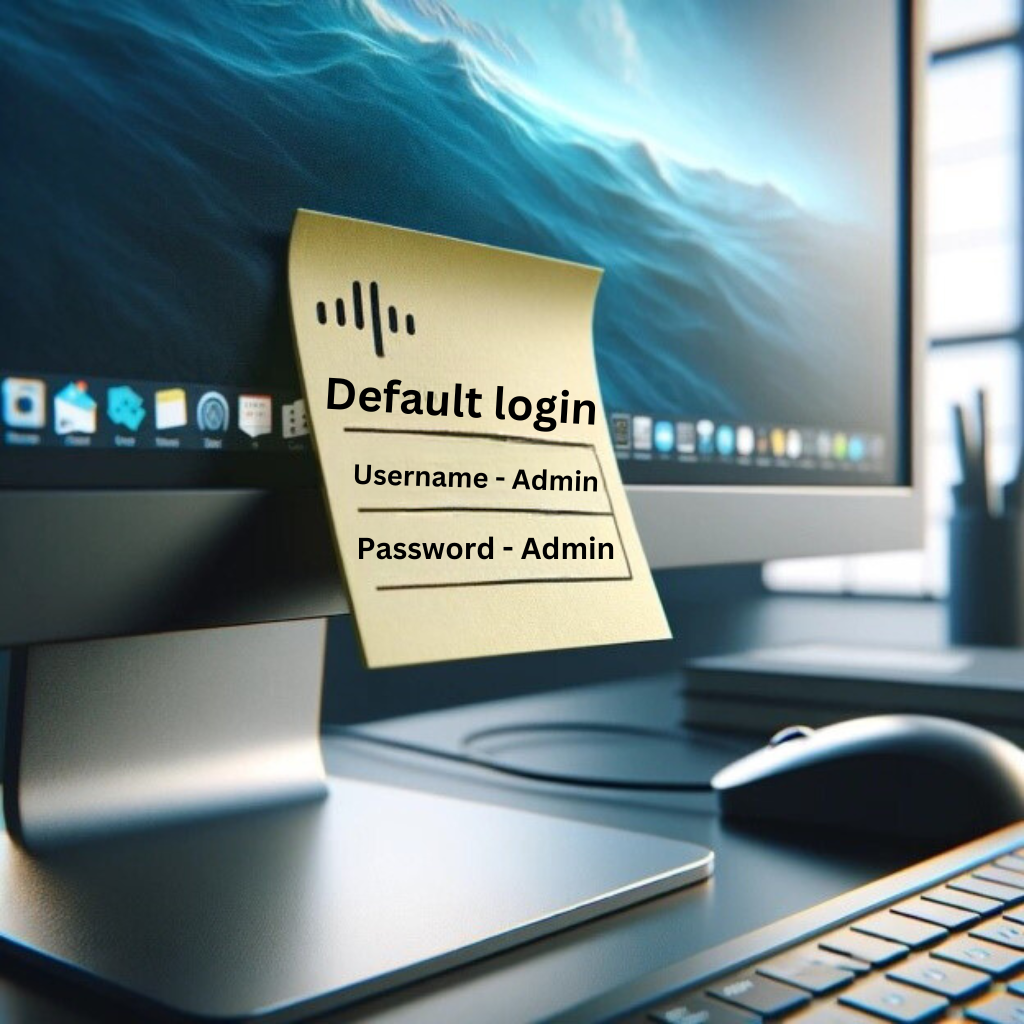
-
Understanding Cisco Default Login Credentials:
Cisco, renowned for its robust networking equipment, maintains a standard practice of providing default login credentials to facilitate the initial setup process. These credentials are designed to be universal across many models, allowing you to swiftly access your router’s administrative console. However, it’s imperative to change these default settings during the initial setup to secure your network against unauthorized access.
-
Common Cisco Router Default Login Credentials:
For most Cisco routers, the cisco default login involves a variation of simple, universally applied credentials. Typically, you can gain access to your router’s admin interface using the following:
-
- Username: admin
- Password: admin
or
-
- Username: cisco
- Password: cisco
In certain cases, especially with more advanced or specific Cisco models, the router might not come with a default password, requiring you to set one upon first accessing the router’s administrative interface.
-
Model-Specific Default Credentials:
While the above credentials cover a broad range of Cisco routers, specific models may have unique login details. Here’s a closer look at some model-specific default username and password cisco router settings:
-
-
Cisco Linksys Series:
- Username (admin)
- Password: (Leave blank)
-
Cisco RV Series:
- Username (admin)
- Password: (admin)
-
Meraki Cloud-Managed Devices:
- Access through the Meraki dashboard with credentials provided upon device registration.
-
-
Securing Your Router Post-Login:
Upon successfully logging in with the cisco router default username and password, the immediate next step is to secure your router. Changing the default login information to a strong, unique username and password combination is crucial. This simple yet effective measure significantly enhances the security of your network, shielding it from potential threats.
The cisco default login credentials serve as the initial gateway to accessing and configuring your router. Whether you’re setting up a new device or resetting an existing one to factory settings, knowing these default credentials is essential. Remember, immediately updating these default settings is key to securing your network. As we progress further, we’ll delve into how to log into your router, change these default credentials, and configure your network settings to meet your specific needs.
How to Log into Your Cisco Router:
Successfully logging into a Cisco router is a pivotal step in managing and securing your network. This process grants you access to the router’s administrative interface, where you can configure settings, update security protocols, and monitor your network’s performance. In this section, we’ll guide you through the detailed steps to access your Cisco router’s admin page, covering both web interface and console methods. Whether you’re a seasoned IT professional or a home user, these instructions will ensure you can navigate the login process with ease.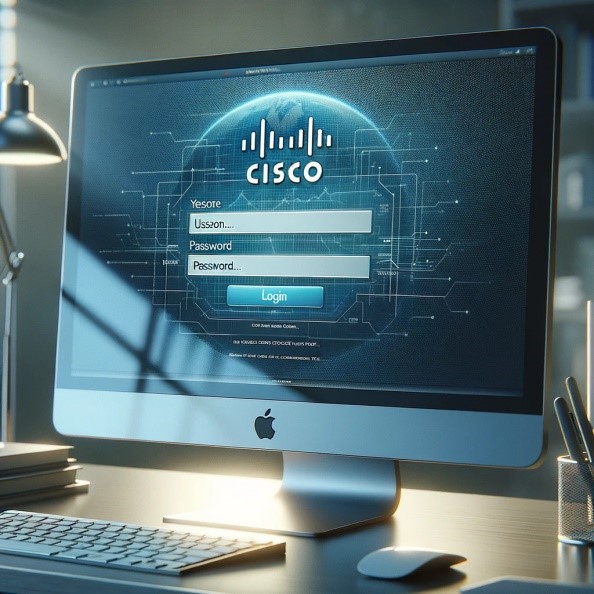
-
Web Interface Login:
The most common method for logging into a Cisco router is through the web interface, a user-friendly approach that requires only a web browser and your router’s IP address.
-
-
Connect to Your Router:
-
Ensure your computer or device is connected to your router, either through a wired Ethernet connection or Wi-Fi.
-
-
Open Your Web Browser:
-
Launch your preferred web browser and enter your router’s IP address in the address bar. The default IP for most Cisco routers is 192.168.1.1 or 192.168.0.1. This is what’s often referred to as the 168 l 0.1 login cisco step.
-
-
Enter Default Login Credentials:
-
Upon reaching the login screen, type in your password and default username of Cisco router. If you’re unsure of these details, refer to Section 2 of this guide for common cisco router default username and password
-
-
Access the Admin Interface:
-
After entering the correct credentials, you’ll be granted access to the router’s administrative dashboard. From here, you can start configuring your router’s settings according to your needs.
-
Console Login:
For those who prefer a more direct approach or need to troubleshoot without using the web interface, the cisco console login offers a powerful alternative.
-
-
Connect the Console Cable:
-
Locate the console port on your Cisco router and connect it to your computer using a console cable. You may need a USB to serial adapter if your computer doesn’t have a serial port.
-
-
Launch Terminal Software:
-
Open a terminal software program on your computer, such as PuTTY or HyperTerminal, to establish a connection with the router. Configure the software to connect using the appropriate COM port at baud rate of 9600.
-
-
Log in to the Router:
-
Once the connection is established, you’ll be prompted to enter the router’s login credentials. Use the default or previously configured username and password to access the router’s console.
-
-
Access Router Commands:
-
After logging in, you’ll have access to the Cisco Command Line Interface (CLI), where you can enter commands to configure your router’s settings.
Logging into a Cisco router, whether through the web interface or console, is a straightforward process that opens the door to comprehensive network management. By following step-by-step instructions, you can ensure secure and efficient access to your router’s administrative features. As we move forward, we’ll explore how to troubleshoot common login issues, further enhancing your ability to maintain a robust and secure network.
Troubleshooting Common Login Issues
Even with a straightforward process like logging into a Cisco router, users may occasionally encounter hurdles that prevent them from accessing their router’s admin interface. These challenges can range from forgotten passwords to network connectivity issues. This section is dedicated to troubleshooting Cisco router login issues, providing you with solutions to common problems so you can regain access to your router’s configuration and management settings.
Incorrect IP Address for Router Login:
One of the most frequent issues users face is entering the wrong IP address for the router login page.
- Ensure you’re using the correct IP address, typically 192.168.1.1 or 192.168.0.1 for most Cisco routers. If unsure, check the router’s manual or use a command prompt (cmd) and type ipconfig to find the default gateway address.
Forgotten or Incorrect Login Credentials:
If you’ve changed the default login credentials and can’t remember them, this can prevent access to your router’s admin interface.
- If the Cisco default login doesn’t work and you’ve forgotten your customized credentials, you may need to reset your router to factory settings. This can typically be done simply holding down the router’s reset button for approximately 10-15 seconds. After reset, you can log in using the default credentials provided in the router’s documentation.
Router Not Responding to Login Attempts:
Sometimes, you might find the router’s login page not loading or the router not responding to your login attempts.
- Check your network connection to ensure your computer is correctly connected to the router via Ethernet or Wi-Fi. Additionally, try clearing your web browser’s cache or using a different browser to rule out browser-related issues. Restarting the router can also help resolve this issue.
Browser Security Warnings When Accessing Router Login Page:
Modern web browsers may flag the router login page as insecure, especially if it uses an HTTP connection, leading to security warnings.
- Proceed with caution, and ensure you’re connected to your router’s network. You can usually bypass these warnings by selecting the option to proceed to the website (advanced users only). For long-term solutions, consider configuring router settings to use HTTPS for secure connections, if supported.
No Internet Connection After Logging In:
After successfully logging into a Cisco router, you might find that you have no internet connection.
- Check the WAN (Internet) connection between your router and modem. Make sure the cables are fastened firmly and the modem is functioning correctly. You may also need to clone your PC’s MAC address to the router or configure PPPoE settings, depending on your ISP’s requirements.
Troubleshooting Cisco router login issues can be straightforward when you know what steps to take. Whether it’s verifying the correct IP address, resetting the router to regain access with Cisco default login credentials, or addressing connectivity and browser-related problems, these solutions aim to minimize downtime and restore access to your router’s admin interface. Remember, maintaining secure and updated router settings is crucial for network security and performance, highlighting the importance of overcoming any login hurdles you encounter.
Securing Your Cisco Router After Login
Successfully logging into a Cisco router marks the beginning of a crucial phase in network management—securing your router. The default login credentials, while necessary for initial setup, are widely known and can pose a significant security risk if not updated. This section delves into essential security measures, focusing on changing default credentials and implementing additional safeguards to protect your network. By enhancing security post cisco admin login, you ensure your network’s integrity and safeguard against unauthorized access.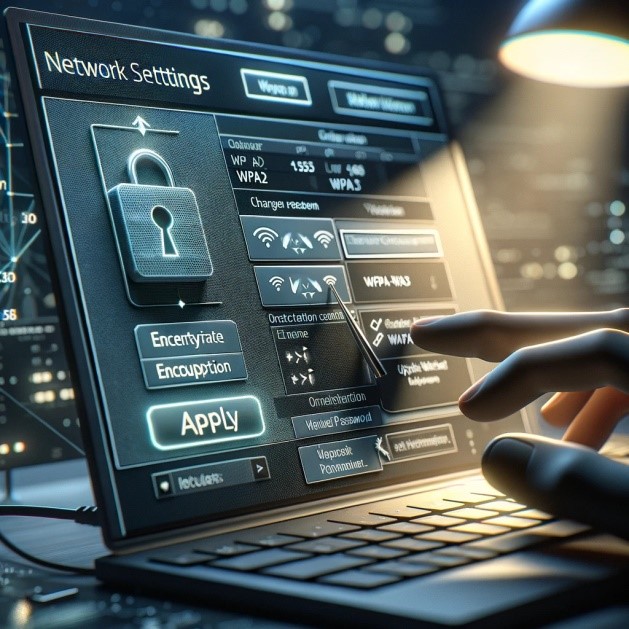
Changing Default Credentials:
The first and most critical step after a successful cisco wifi router login is to change the default username and password. This action prevents easy unauthorized access and is the foundation of a secure network.
-
Access the Admin Interface:
After logging into a Cisco router, navigate to the settings or system menu where you can change the login credentials.
-
Create a Strong Password:
Choose a strong, unique password that combines letters, numbers, and symbols. Avoid common words or easily guessable combinations.
-
Update the Username (if possible):
If your router allows, change the default username to something unique. This adds an extra layer of security.
Enable Network Encryption:
A basic security precaution that keeps unauthorized users out of your network is to encrypt your Wi-Fi.
- Make sure WPA3 encryption is enabled on your router, the latest security standard. If WPA3 is not available, use WPA2.
Activate a Firewall:
Cisco routers typically come with a built-in firewall that can help protect your network from harmful traffic.
- Access the firewall settings through the router’s admin interface and ensure it’s activated. Customize the settings to suit your security needs, being mindful of not overly restricting legitimate network traffic.
Update Firmware Regularly:
Firmware upgrades are released by manufacturers to fix security flaws and enhance functionality.
- Regularly check for firmware updates through the router’s admin interface. Set up automatic updates if your router supports it.
Disable Remote Management:
Remote management can be a handy feature but also poses a risk if not securely configured.
- Ensure remote management is turned off unless necessary. If you need remote access, ensure it’s secured with strong passwords and, ideally, VPN access.
Use a Separate Network for Guests:
Offering guest Wi-Fi access is common, but it’s safer to keep this traffic separate from your main network.
- Use the router’s admin interface to create a guest network. This keeps guests’ internet activity separate and restricts access to your main network’s devices and data.
Securing your Cisco router following a successful cisco admin login is not just about changing the default credentials; it involves a comprehensive approach to network security. From enabling WPA3 encryption and activating the built-in firewall to regularly updating firmware and managing guest access, each step is crucial in protecting your network. Remember, the security of your Cisco router—and by extension, your entire network—relies on these foundational security measures implemented right after cisco wifi router login.
Advanced Configuration for Cisco Router Login
After mastering the initial cisco router login and securing your router, the next step is to dive into advanced configuration and management to fully optimize your network’s performance and security. This section guides you through essential advanced settings changes, including firmware updates, intricate network setup, and further security enhancements. By utilizing the cisco router login command and login local command cisco, you can unlock a deeper level of customization and control over your Cisco router.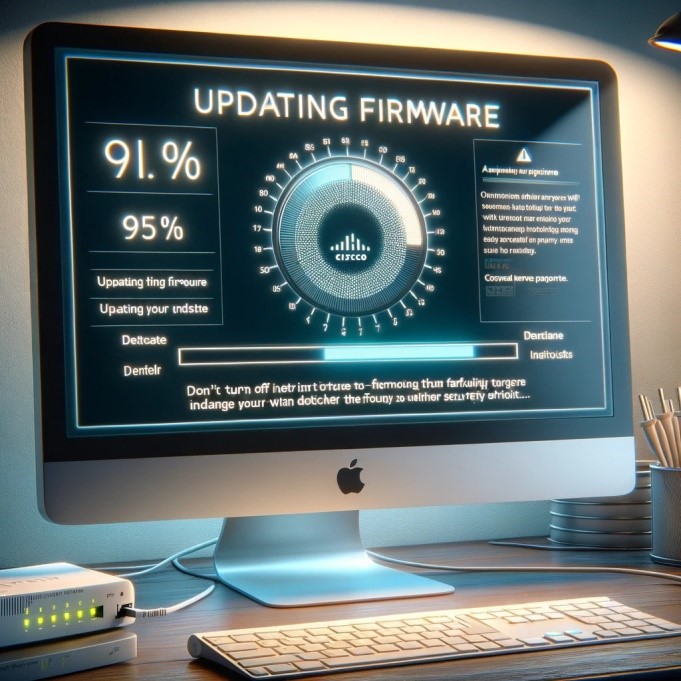
Firmware Updates for Enhanced Performance and Security:
It’s essential to keep the firmware on your router updated for network security, performance, and accessing new features.
-
Access Firmware Update Settings:
Navigate to the router’s administrative interface, often found under a System or Administration tab, to check for available firmware updates.
-
Performing Firmware Updates:
Follow the on-screen instructions to download and apply firmware updates. Ensure not to interrupt the update process to avoid potential device malfunctions.
Configuring VLANs for Network Segmentation:
Virtual LANs (VLANs) allow to segment your network into separate subnetworks for enhanced performance and security.
-
Creating VLANs:
Use the cisco router login command to access the CLI and configure VLANs, separating devices based on department, purpose, or security level.
-
Assigning Ports to VLANs:
Assign network ports to specific VLANs to control access and traffic flow between different segments of your network.
Quality of Service (QoS) for Traffic Prioritization:
QoS settings enable you to prioritize network traffic, ensuring critical applications have the bandwidth they require.
-
Configuring QoS Settings:
Through the administrative interface, define QoS rules to prioritize traffic for critical applications, such as VoIP or video conferencing services, improving their performance during high network usage.
Advanced Security Features:
Beyond basic security measures, Cisco routers offer advanced features to further protect your network.
-
Access Control Lists (ACLs):
Use ACLs to define fine-grained rules about which devices or services are allowed or denied network access.
-
VPN Configuration:
Set up Virtual Private Network (VPN) services on your router to secure remote access to your network, utilizing login local command cisco for authentication.
Monitoring and Management Tools:
Leverage Cisco’s monitoring and management tools to maintain optimal network performance and security.
-
Syslog and SNMP:
Configure Syslog for logging and Simple Network Management Protocol for monitoring network activity and performance.
-
Network Analysis Modules (NAMs):
For routers that support it, NAMs can provide deep network analysis and visibility.
Advanced configuration and management of your Cisco router open up a realm of possibilities for optimizing network performance and enhancing security. By engaging with settings such as firmware updates, VLAN configuration, QoS, and advanced security features, you can tailor your network to meet specific needs and challenges. Utilizing the cisco router login command and login local command cisco, along with the administrative GUI, allows for comprehensive control and customization. Remember, these advanced configurations require a solid understanding of networking principles to ensure they are applied effectively and safely.
Cisco Switches and Other Devices
Transitioning from routers to the realm of Cisco switches and other networking devices, it’s essential to understand that the default login cisco switch process shares similarities with routers but also bears unique nuances. This section provides an overview of how to log into Cisco switches, highlighting the differences in the process or credentials required. Whether you’re managing a small home network or a complex corporate infrastructure, mastering the login process for various Cisco devices, including switches, is crucial for effective network administration.
Understanding the Default Login for Cisco Switches:
Just as with routers, Cisco switches come with default login credentials to facilitate initial setup and configuration. However, the specifics can differ slightly depending on the model and series of the switch.
-
Common Default Credentials:
For many Cisco switches, the default login for cisco switch involves using admin as both the username and password or using cisco as the username and cisco as the password. In some instances, the switch may not require a default password upon the first login, prompting you to create one.
Accessing the Switch via Console Connection:
One primary method for logging into a Cisco switch is through a console connection, which provides direct access to the switch’s command-line interface (CLI).
-
Using the Console Cable:
Connect the console cable from your computer to the switch’s console port. Utilize terminal emulation software, such as PuTTY, to establish a connection.
-
Console Login Process:
Once connected, you might be prompted to enter the cisco switch default username and password. If it’s the first time or the device has been reset to factory settings, you’ll likely use the default credentials mentioned above.
Web Interface Access for Configuration:
Some Cisco switches offer web-based management interfaces, allowing for a more intuitive configuration process.
-
Determining the Switch’s IP Address:
If your switch is set up to dynamically obtain an IP address via DHCP, you’ll need to identify the assigned IP address, possibly through a connected router’s DHCP client table.
-
Web Login:
Enter the switch’s IP address into a online browser and sign in using the default login credentials. This method enables access to graphical interface options for configuring the switch.
Differences in Process and Credentials:
While the overall concept of logging into Cisco switches and routers is similar, key differences exist:
-
Device-Specific Credentials:
Always verify the specific default credentials for your Cisco switch model, as they can differ from routers and among switch series.
-
Access Methods:
Depending on the switch model, you might have additional access methods, such as Telnet or SSH, which require preliminary configuration through the console interface.
The default login cisco switch procedure is an essential step in managing and configuring your Cisco switches and networking devices. Familiarizing yourself with the various access methods and understanding the potential differences in default credentials are critical for effective network management. Whether you’re accessing your device via a console connection or a web interface, knowing how to navigate these initial login steps ensures that you can leverage the full capabilities of your Cisco switches, tailoring them to meet your network’s specific needs and security requirements.
FAQs (Frequently Asked Questions)
Q1. What are the steps for Cisco Router Login?
- A: For Cisco router login, connect to the router’s network, open a web browser, enter the router’s IP address(often 192.168.1.1), and use the default or set credentials for access.
Q2. How do I complete logging into a Cisco Router?
- A: Completing logging into a Cisco router requires you to connect to the router, either wirelessly or via an Ethernet cable, and enter the router’s IP in a browser followed by the default login credentials.
Q3. What is the Cisco Router default login?
- A: The Cisco router default login typically involves using ‘admin’ or ‘cisco’ as both the username and password, unless it has been changed from the default.
Q4. How can I find the Cisco Router default username and password?
- A: The Cisco router default username and password are usually ‘admin’ or ‘cisco’, but it’s advised to check your router’s documentation for specific details.
Q5. Where can I find the Cisco AP default username and password?
- A: The Cisco AP default username and password (Access Point) are often set to ‘cisco’ for both, designed for initial setup before securing the device with custom credentials.
Q6. What is the procedure for Cisco Firepower default login?
- A: The Cisco Firepower default login process involves using ‘admin’ as the username and a specific default password found in the Firepower documentation, typically used for initial access to the management console.
Q7. What credentials are needed for Meraki default login?
- A: For Meraki default login, use the email and password you set up for the Meraki dashboard access, as Meraki devices are managed through the cloud-based Meraki dashboard.
Q8. How can I troubleshoot cisco router login command errors?
- A: To troubleshoot cisco router login command errors, ensure you’re entering the correct IP address in your browser and using the right credentials. If you cannot log in, reset your router to its factory settings or check for network connectivity issues that might be preventing access to the router’s admin interface.
Q9. What steps should I follow for default login for cisco switch if I encounter issues?
- A: If you encounter issues with the default login for cisco switch ensure you’re connected via console cable, check your terminal settings and try the default credentials again.
Q10. Is the cisco default login different for routers and switches?
- A: Yes, the cisco default login may vary between routers and switches. Routers typically use admin/admin or cisco/cisco as default login credentials, while switches might not require a default password or use a variant of these credentials.
Conclusion
Navigating the cisco router login and setup process is foundational to establishing a secure and efficient network. From the initial logging into a cisco router to applying the cisco router default login credentials, every step is crucial in ensuring your network’s integrity and performance. Remember, the cisco router default username and password are just the starting point; changing these to unique, strong credentials is vital for safeguarding your network against unauthorized access.
For those managing Cisco switches, understanding the default login cisco switch and familiarizing yourself with the cisco switch default username and password are equally important. Whether it’s a router or switch, the cisco default login should always be modified to enhance security. Additionally, the versatility of Cisco devices, from routers to Meraki products, means that procedures like meraki default login might differ but still adhere to the principle of securing access as a priority.
If you’re embarking on this journey for the first time, or if you encounter any hurdles with the cisco router login or the default login for cisco switch know that these challenges are surmountable with the right information and support. Cisco’s comprehensive documentation and support forums are invaluable resources for troubleshooting and learning.
We encourage all users, whether new to Cisco products or experienced network administrators, to continue exploring advanced features and configuration options. The journey from cisco wifi router login to advanced network management is rewarding, offering opportunities to enhance your skills and your network’s capabilities.
For further assistance or to deepen your understanding of Cisco network management, don’t hesitate to reach out to Cisco Support or engage with the community through forums and discussion groups. Your proactive approach to learning and securing your Cisco devices will pay dividends in network performance and security.
To know more about Cisco router login and resolve its related issues, visit Cisco Support page.


Mark robinson
I’ve recently acquired a Cisco 800 series router for my small office. Can you guide me through the initial steps for logging into the router, including what the default username and password might be? Additionally, I’m curious about the standard procedure for accessing Cisco switches and if the credentials differ across devices.
CallSupport
Starting with your Cisco 800 series router, the first step to managing your network is to successfully log in using the default credentials. Typically, Cisco routers like the 800 series might use ‘cisco’ as both the default username and password, although it’s essential to refer to your device’s documentation as credentials can vary. For logging into a Cisco router, you can use a web browser and navigate to the router’s default IP address, commonly 192.168.1.1 or 192.168.0.1 for most models, entering the default credentials when prompted.
When it comes to Cisco switches, the default login process shares similarities but also has its nuances. The default login cisco switch, including for popular models or even specific ones like the Cisco Nexus series, typically requires using a console connection for initial setup. Here, you might also encounter ‘cisco’ as the default username and password. However, just like routers, it’s vital to consult the specific device’s manual for accurate default credentials. Switches sometimes offer a web-based interface or command-line access via SSH or Telnet, depending on the model and configuration.
Remember, after successfully logging in, whether it’s a Cisco router or switch, it’s crucial to change the default username and password to secure your network against unauthorized access.
Paul nguyen
I’ve noticed my Cisco Linksys router isn’t functioning as expected, and I suspect I need to check the settings. How do I log into the Cisco Linksys router, and what are the typical default credentials? Moreover, for future reference, how would the process differ if I were using a Meraki device instead?
Support Admin
To address issues or modify settings on your Cisco Linksys router, accessing the admin interface is required. For most Cisco Linksys routers, the login process involves using a web browser to navigate to the default IP address of the router, which is often 192.168.1.1. The default credentials usually involve ‘admin’ as the username and either ‘admin’ or a blank field for the password. It’s critical to check your router’s specific documentation as defaults can vary slightly.
On the other hand, managing a Cisco Meraki device involves a different approach, primarily due to Meraki’s cloud-managed nature. The meraki default login process requires you to access the Meraki dashboard online, which uses the email and password you set up for dashboard access. This cloud-based management system simplifies accessing and configuring your Meraki devices from anywhere, offering a streamlined alternative to traditional direct device login methods.